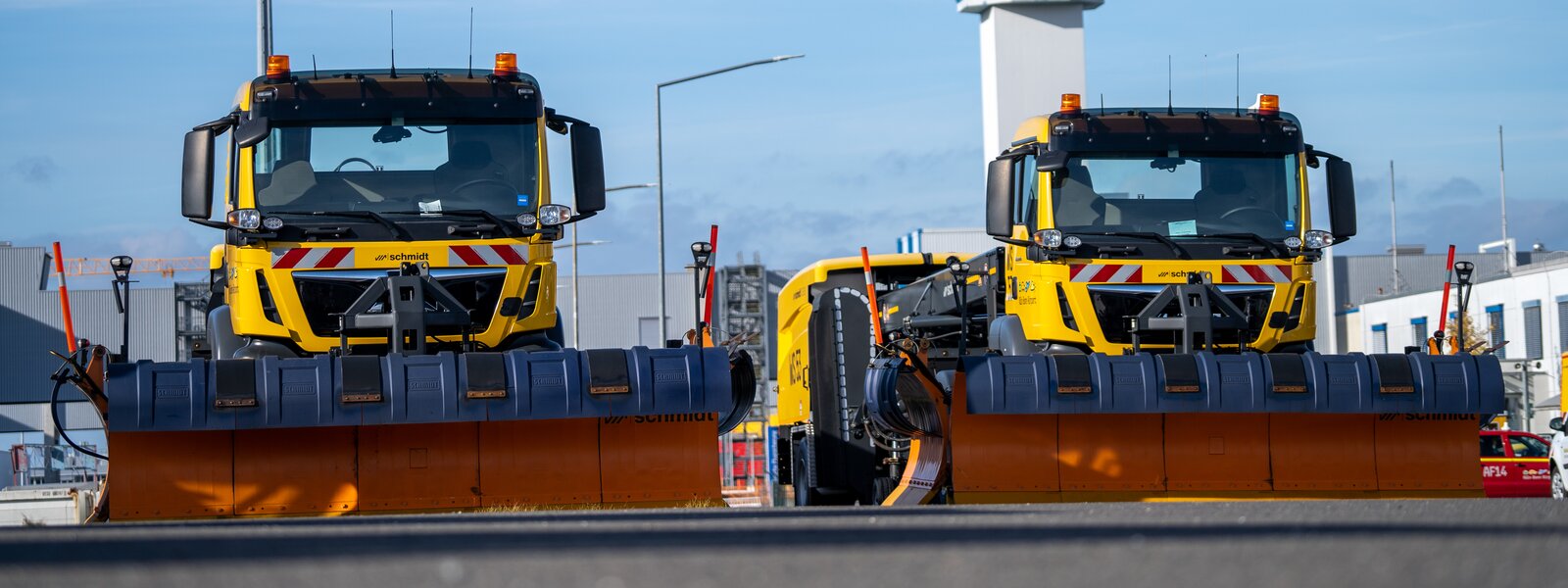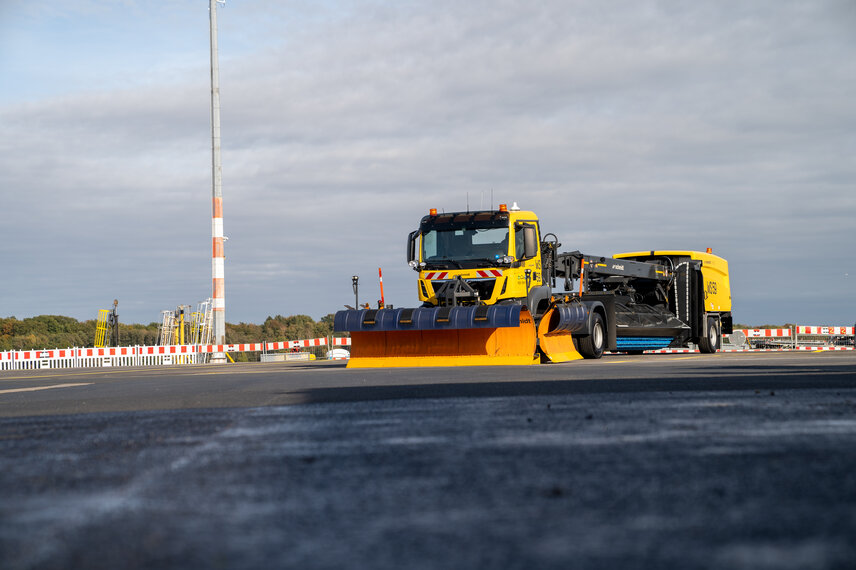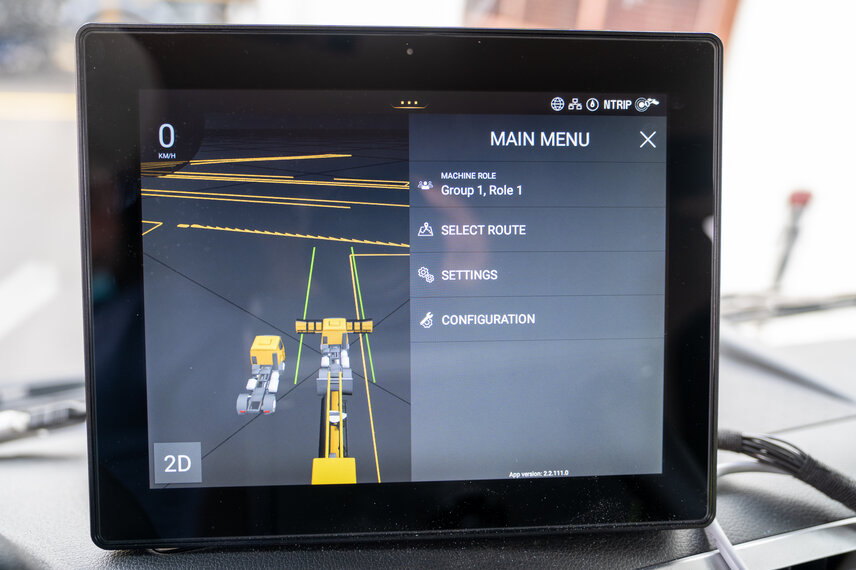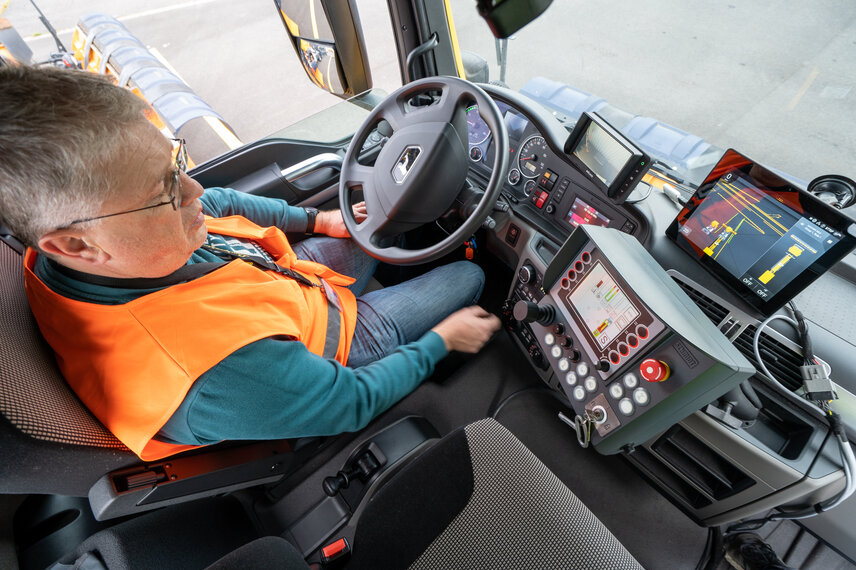Many years of close collaboration with numerous airports has taught us not to rely on standard solutions off the shelf, but to design our systems that can be adapted to the specific needs of each individual airport. And we have opted since the beginning for a step-by-step approach to the development of tools and technology for autonomous operations at airports.
The result is our driver assistance system, which integrates the requirements of winter service management with those of the drivers themselves. Operational controllers can log, process and monitor entire routes or individual segments using high-precision standards, such as RTK or NTRIP. At the same time, the system shows the driver every deviation from the plan in real-time, giving them the option to follow the system or override it. Markus Moi, Winter Service Coordinator, and Michael Enkler, Winter Service Training Consultant at Cologne Bonn Airport commented: “The system is extremely valuable in high-stress situations, such as simultaneously steering the machine, controlling the snow sweeper, receiving instructions by radio, requesting clearance, confirming completed tasks and monitoring the traffic situation – it’s a lot to do at once. Being able to rely on the system for some of these tasks provides valuable support. However, it’s essential that the assistance system is well-structured.”
Enkler adds that, even with a driver assistance system or partial automation, it is important that winter service drivers are familiar with the airport and routes, and have a good sense of direction on the tarmac and grounds. That’s because non-standard situations occur regularly and frequently at airports, many of which also require flexible personnel planning. “For drivers who don’t work in winter service very often, an assistance system is ideal and well-received. It shows them where to drive and what to do at certain points, and which functions they need to select for the plough, brush and blower,’ says Enkler.
As well as providing valuable support in standard situations, an assistance system is especially welcome in wintery weather conditions, which can result in poor visibility and traffic surfaces that are completely snow-covered. “This applies even to highly experienced winter service drivers,” says Moi. “The driver assistance system makes sure that the driver stays in the right lane, or that the group leader always sets out on the right track so that the last machine doesn’t end up on the grass.”
Autonomous operations at airports enable increased safety and efficiency, greater flexibility and substantially lowerCO2 emissions, as well as providing both increased work safety and cost reduction. Driver acceptance of the systems is high in practice when they fully understand that they are not controlled by the machine, but are being supported in their daily activities. And, according to Michael Enkler, as long as operations are partially autonomous, people will continue to play a central role. The next step will be to enable one driver to monitor and operate more than one machine. “Then, too, the operator is still at the centre, but in terms of efficiency, flexibility and safety, this next step is bound to be a big advantage for airports,” says Markus Moi. So, just as we said at the beginning: it’s step-by step towards the future.
PS: Do you speak German and do you want to hear how Cologne Bonn Airport clears and de-ices a total surface area of 2,165,890 square metres in winter, including any parked planes? Click here to access the podcast (in German) of Cologne Bonn Airport.




